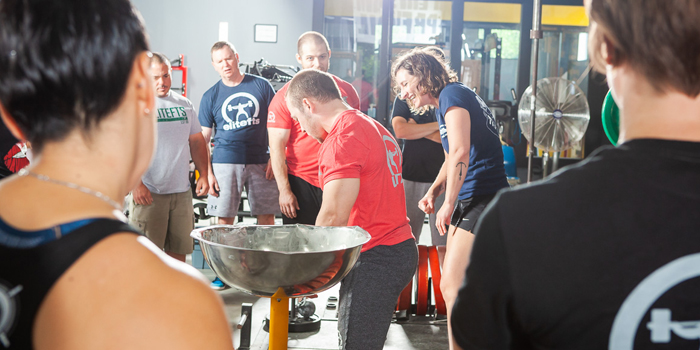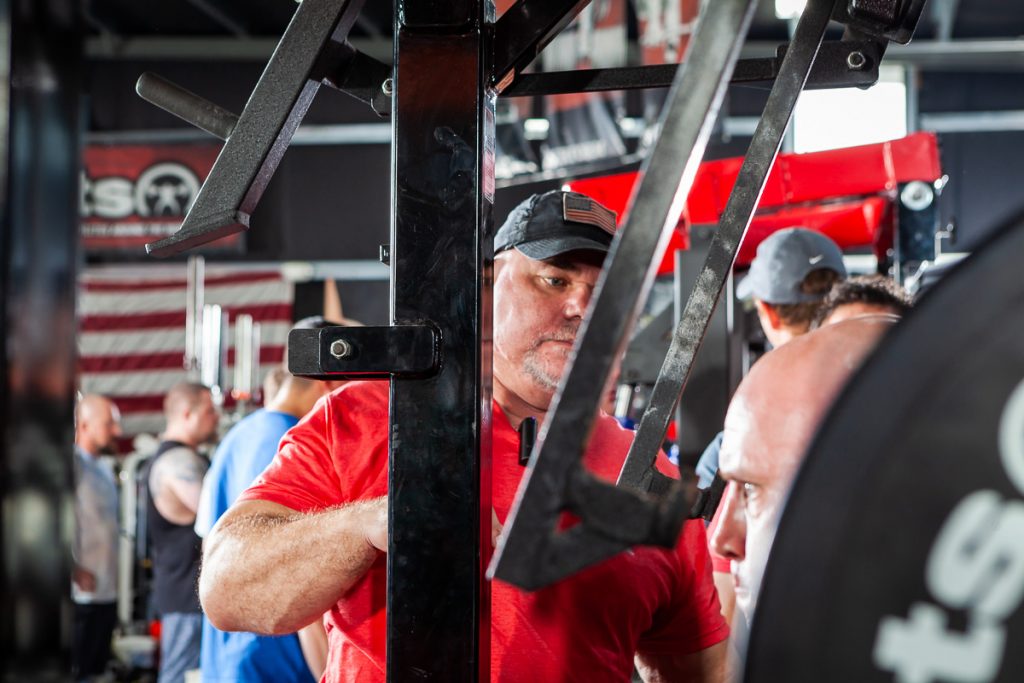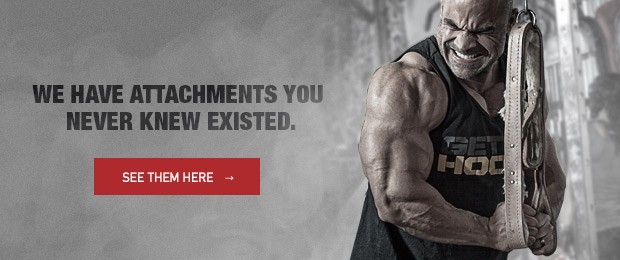
It was hot as all hell in a 1,000 square-foot garage-turned-gym in a small town in central Pennsylvania, and I was there resting in between a set of squats. Gene, the owner and head coach of the facility, was dressed inexplicably in heavy sweats on a late afternoon in July. He was a thick, stocky man in his late sixties, with an enormous ridge of shoulders in the middle of which sat a plump, partially-bearded, partially-bald head.
Gene rarely moved. And when he did, it was as though he was migrating from one bench to another. The training sessions with Gene were never set in time. I knew we were about halfway through when the burning sensation of the lactic acid would meet the fatigue of my muscles. The sets became heavier, and I would collapse myself forward, hanging onto the barbell before me, head draping through my arms, staring at no particular fixed point on the floor. This would be about the time when Gene would go on about the 70s and the kind of guys who would come in to lift.
Enumerating a list of occupations as if it were the beginning of some Old Testament book, Gene would begin in the exact same order each time: construction workers, firemen, corrections officers—here, he would pause and mention that there was a maximum-security penitentiary about five miles down the road—and conclude with mechanics, janitors, and even a few priests. “And what was it like?” Gene would ask me, continuing, “It was about as rough as it got. Guys would yell and curse, and it didn’t matter if it was the priest or the cop. And let me tell you, everybody would spot you. Everybody wanted to see if you could lift that weight.”
He would end by crossing his pipe-like forearms and sit back on the bench, raising his eyebrows as if to signal a grin underneath the white mass of beard. As soon as I felt like I caught my breath, I would nod to him in acknowledgment. My shirt was soaked twice over, so using it to absorb the sweat didn’t do any good, nor did my ferrous-stained hands. Gene offered a towel, but it was the same one he had been using. This is how it was for months that summer. I would lift, Gene would coach me through a movement, and as I rested, he would tell a story. Then the younger crop of proletariat would arrive, laughing or in stone-cold silence. But as they would warm up, they would join the elder lifter in exchanging war stories from under the bar.
RELATED: Why Do You Lift — Meaning, Identity, Hope and Passion
Barbell clubs like Gene’s are not just to build strength but how socializing the human body in ways unseen by the larger masses of people who don’t train. It is a commonly-held myth perpetuated among fitness professionals that exercising the body is meant for the individual, and their insistence on affixing to exercise a highly self-centered praxis is both misguided and, quite frankly, not true. Their ideas, or better yet, ideology, stems from how we perceive the modern gym today—as a space where the struggle against fat loss and building muscle requires sheer willpower. And while dedication is certainly required to carve out the body we desire, two main elements are absent in this line of argument.
The first is how barbell clubs, or small, private facilities which cater to intense practitioners of strength sports, produce a set of norms and customs that socialize an individual into a particular culture. The second is how this assembly of practices and rituals also generate a broader set of body-awareness, which dissolves the Cartesian duality of mind and body into distinct categories of experience or knowledge. It approximates more closely German philosopher Martin Heidegger’s notion of “being-in-the-world” or how we situate ourselves as individuals whose fullness of interacting through space and time, with people, nature, delivers to us an awareness of our own mortality. Simply put, we step outside our own grounded sense of individuality we inhabit, guided by just what our minds perceive. As a result, we venture on a quest for self-improvement and provided meaning for our limited lives. Both the first and second conditions are related and necessary for us to truly develop ourselves. What follows is an exploration of how each embodies the social.

The types of stories Gene would tell younger lifters, and I could be construed on a certain level, as nothing more than narratives of manhood colored by risqué jokes. No one who enters this barbell club, or others like it, is ever left alone. It would be like wandering through some metropolitan bazaar in the Middle East as a tourist: you can’t take two steps without a merchant beckoning you to come over and buy a carpet, all the while calling you my friend or sir. Ignoring them would spare you your accustomed sense of privacy and space. But as a newcomer in this environment, it would also deprive you of ever encountering an old-world market, of which more than just products are being offered. There would be the entire experience of having the kind of disarming conversation which lubricates the potential customer with a sense of ease and familiarity with the erstwhile seller.
Much of the same dynamic can be observed in a barbell club. A person cannot enter anonymously accompanied with the perspective that it’s just another commercial gym. One has to converse with the other lifters, share in their jokes, be respectful of the advice given on executing a lift or to ask someone whether they need a spot. All of these customs are required not just to make friends or even to have a fateful encounter with a future training partner—but are in fact a quintessential part of socializing oneself to get stronger; to feel as though the entire gym is conspiring to make you suffer to the point of growth.
This kind of atmosphere eschews, in other words, the very modern notion of individualistic exercise where working out becomes a solitary endeavor with your body. It is why that for the most part, little physical progress is made by the gym-goer who remains stuck on the same weight for months, if not years.
In the United States today, barbell clubs are sprouting up in record numbers. This is by and large a response by the average gym-goer who has grown content with their training regiments. Progress had stalled, and not just out of a lack of willpower, but because the environment of the commercial gym itself breeds complacency.
Unlike the big box commercial gyms like Golds, barbell clubs have their origins in the no-frills, no-nonsense garage gyms across states like Pennsylvania. The equipment they house was nothing more than a few benches, a standing squat rack or power rack, and York Barbell plates in various stages of oxidation. No machines, no treadmills, and no mirrors. Perhaps a radio stuffed somewhere in a shelf busy with wrenches and a poster of Farrah Fawcett displayed prominently above a row of dumbbells. Locals from the neighborhood would join the garage gym owner as they collectively worked on their bench press or squat, a row variation, or just some type of curl.
Among the more serious outfits, discussions would whittle down from broad subjects like work and the family and as they began to hone in a lifter about to squat or deadlift. Cues would be shouted to keep the lifter on point with their technique, reminding them to use the fullness of their muscles, to become aware that their entire being as is required for a successful lift. Commands like “Push your body away from the ground!” or “Press that bar through the goddamned roof!” also indicates for the lifter an awareness of how the body ought to move as one unit. By situating the lifter in the world around them, they are less inclined to “be” in their own head, as is sometimes the case when we pick up weights.
Both men and women involved in strength sports like powerlifting or weightlifting can push or pull weight in excess of three times their own bodyweight—and increasingly, more. Contrary to the popular image of the lone-wolf lifter who relies on willpower to diet properly and train, becoming physically strong is a deeply social activity. In fact, some of the strongest individuals in the world train with three to four other lifters, who correct their technique, watch their form, load their weights, as well as offer words of encouragement.
Barbell clubs breed camaraderie in strength sports at a level that is both hyper-social as well as personally detached. Hyper-social, in that, as a lifter, you are thrusting yourself into an environment where people want to help, offer guidance or advance, coach you, and touch you—especially when spotting or instructing a lift. At the same time, it is a sort of detached experience, as few would care to know what your job is or your views on politics and social issues. Such topics of discussion which migrate away from the immediate concerns of training throw off the tempo of the workout. It is within this space of the de-personalized and hyper-socialized that we can locate a distinctive type of socialization that differs from how we situate ourselves in society at large.
Consider the following: in childhood, we are socialized at an early age by parent(s) and loved ones as to how we ought to behave, and later on, by our classmates and colleagues at work. The barbell club is unique in that it is a space wherein socialization occurs when exerting force against external objects. It is done primarily with people whom we barely know on any personal level through extensive conversations.
Unlike most rules we are taught on how to socialize, lifting doesn’t require a great deal of verbal exchange of ideas or comments to invoke a sense of mutually shared interests or ideas. It is as intimate as it is terrifying; pleasurable as it is ennobling. And because it evokes so many extremes, lifters often feed off the energy being put out by the other, good or bad. For example, when spotting, a relationship forms in the confines of a given action (lifting) where close physical proximity with another is divorced from overtly sexual connotations in activities like slow dancing or sex. The spotter of a squat, say, traces the movements of the lifter.
Lifting can also deeply instigate psychological or emotional reactions. It positions the lifter on display before an audience, opens them to vulnerability. For regardless of the current discourse on body positivity and acceptance, physical strength is still closely associated with the measure of a person’s “usefulness” and, therefore, confers respect or, put more negatively, disrespect depending on how the lift goes. This is especially the case when differently-abled individuals shatter all conceptions of what they can and cannot do. James Norris, a Boston-based Spartan Race athlete who has Cerebral Palsy, frequently speaks on his Instagram page of how those from the able-bodied community posit expectations on his physical strength rooted more on their own ignorance of training than his own capabilities.
If Leo Tolstoy’s observation in the opening pages of Anna Karenina that “[All] happy families are all alike; every unhappy family is unhappy in its own way,” the same could be said for lifting. All failure of a missed lift is lived out in the same way, wherein a tabulated feeling of frustration or anger at failing can sometimes leave the lifter in an almost paralyzing state of analysis. Where did I go wrong? Was it my diet? Was it my sleep? And so on. And yet, nothing is so unmeasurable as the elation wrought from successfully executing a lift. A perceived limit is broken, and the possibility of lifting heavier weights both grounds the lifter in the realization that they are indeed more than capable. And at the same time, a certain lightness of sorts pervades, which moves the proverbial bar of strength to an even higher mark.
The end result of lifting—particularly lifting as part of a barbell club—is a form of socializing and socialization that can only be partly related through words. Coaches like Gene talk between sets or after a workout with a lifter, absorbing them into the culture of the club, but they are also physically attentive as they perform a lift again. They become more cognizant of their own “being-in-the-world” where the subject-object distinction is blurred, if not misrecognizing what is really going on in lifting. This state of being, I think, achieves what Heidegger points to in his commentary on Nietzsche: that one doesn’t merely “have” a body but is bodily. Recruiting all of our physical and mental faculties provides a certain form of social embodiment very few other activities captures in life.
Joe Lombardo is the host of the Scholars & Iron Podcast. He received his Ph.D. in Politics from the New School and currently resides in Arlington, Virginia. Joe’s writings can be found at his SubStack.










